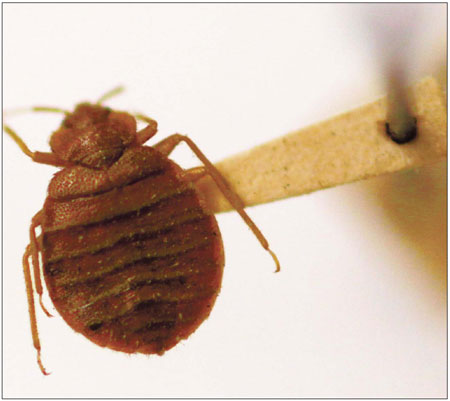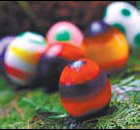Travel
Stung into action
(China Daily/Agencies)
Updated: 2011-04-13 18:03
 |
Large Medium Small |
Spring has sprung and this is the time of year that bugs emerge to bite and sting. Here's how to deal with those irritating itches and welts.
 |
|
Bedbugs, the latest headline-maker in the United States, are famously hard to eradicate.[Photo/Agencies] |
It's that time of year when bugs emerge to bug us. Some can pose real threats ?Lyme disease from tiny ticks, West Nile virus from mosquitoes, or life-threatening allergic reactions to bee stings. But most bug bites are an itchy nuisance.
How itchy or big the welt depends in part on your own skin, how much of the chemical histamine it harbors. Yes, some people really are mosquito magnets. And no, most of the bites people blame on spiders aren't from them at all.
In fact, chances are you won't be able to tell the culprit unless you catch it in the act. Yet doctors and entomologists alike field calls asking, "What bit me?"
"People call up really bummed out," says spider expert Jonathan Coddington of the Smithsonian Institution's National Museum of Natural History, who points to just two worrisome types, the black widow and brown recluse family. Spider phobia, he says, is "out of all proportion to actual risk".
It's not uncommon to have a large skin reaction to any bite or sting, says Dr Reid Blackwelder, a family physician from East Tennessee State University, who sees a couple of them a week in the early spring and summer.
"Most of the time, what people need is reassurance," he says.
Mosquito bites probably are the most common. Sure we've been told to watch out for them at dusk and dawn. But the Asian tiger mosquito bites all day long. It's an aggressive, harder-to-swat version, Coddington says.
If it seems every mosquito's after you, well, there are about 3,500 species around the world and Coddington says most don't bite humans, preferring other animals instead. But those who do can be attracted by sweat, alcohol, perfumes and dark clothing.
Bedbugs are the latest headline-maker. Scientists can't explain why they've suddenly rebounded in many US cities after all but vanishing in the 1940s and 50s. But once they're in a building, they're famously hard to eradicate. You won't feel their needle-like bite, but you might see a line of red dots in the morning.
Not so with horse flies and black flies. They cause painful welts, and they'll chase any blood meal. And yellow jackets may be a bane of summer picnics, but they're most aggressive in the fall, the reproductive mating season, Coddington notes.
Most people face no risk other than infection from scratching, but there are some important exceptions:
Ticks
Blacklegged tick species, commonly called deer ticks, that are as small as poppy seeds can transmit Lyme disease. The Centers for Disease Control and Prevention (CDC) counted more than 35,000 confirmed or probable cases of Lyme in 2009, the latest data available. These ticks are most active from May through July.
If a tick has been biting for less than 24 hours, chances of infection are small. So do a daily tick check. The CDC recommends using insect repellent with DEET.
Antibiotics easily cure most people of Lyme. But other than Lyme's hallmark round, red rash, early symptoms are vague and flu-like. People who aren't treated can develop arthritis, meningitis and some other serious illnesses.
Different tick species around the country can transmit additional diseases, such as Rocky Mountain spotted fever, tickborne relapsing fever, and STARI or Southern tick-associated rash illness.









